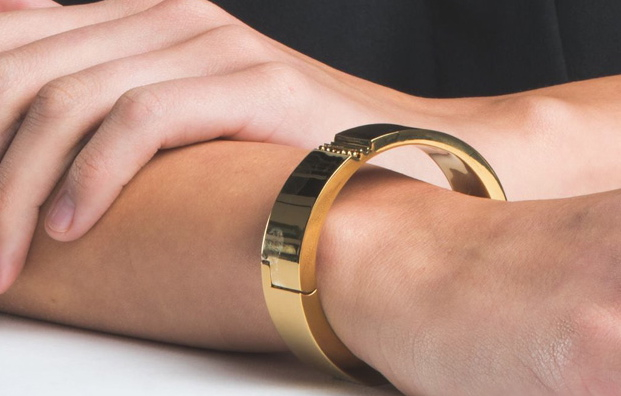Fashion, Sensors Join Forces in Luxury Bracelet with a Secret
January 6, 2017
Dr. Gerald Wilmink, founder and chief executive WiseWear, did not set out to create a high-fashion bracelet with sensors that allow the wearer to discreetly call for help in an emergency. His initial impetus to create wearables came from his grandfather, who suffered from a disease that combined features of Parkinsons and Alzheimers. That’s why WiseWear’s first wearable was a hearable, WiseAid, that combined the features of a hearing aid with an ability to predict falls, by looking at motion, balance and gait.
The WiseAid prototype received funding from the National Science Foundation, and WiseWear continued to focus on P4 medicine — preventative, predictive, personalized and participatory — with digital health solutions. “Over 50 percent of people have a chronic disease,” said Wilmink during CES 2017, whose background is in biomedical engineering. “Digital health is the answer for this.”
Then the company fell backwards into fashion, beginning with a focus on wanting to reduce violence. Why not create a functional distress call feature and house it in a piece of luxury jewelry, thought Wilmink. One year after the idea was sketched on a napkin, three bracelets, designed by Iris Apfel and priced in the $300 range, debuted at Saks Fifth Avenue. The secret sauce, says Wilmink, is a proprietary antenna embedded in the metal.
The bracelets offer typical fitness features, including calories burned, steps walked, and gentle vibrations for phone messages and reminders. But its unique feature is a simple gesture and tap that will send a phone call and text to six people on the user’s contact list. It also sends the user’s GPS location, enabling anyone contacted to make a rescue.
For those who travel internationally, a premium package (priced at $20 to $60 a month) will bring a private security firm to respond to the GPS location.
WiseWear also makes similar products for men, including belts with different buckles and colors. Wilmink is working on numerous projects now; he hinted that some of them will be appropriate for children and seniors and will involve voice command. He also is exploring the best places on the body to create medical wearables; the ear and the forehead, he says, are “interesting for high-fidelity measurements.”


No Comments Yet
You can be the first to comment!
Sorry, comments for this entry are closed at this time.